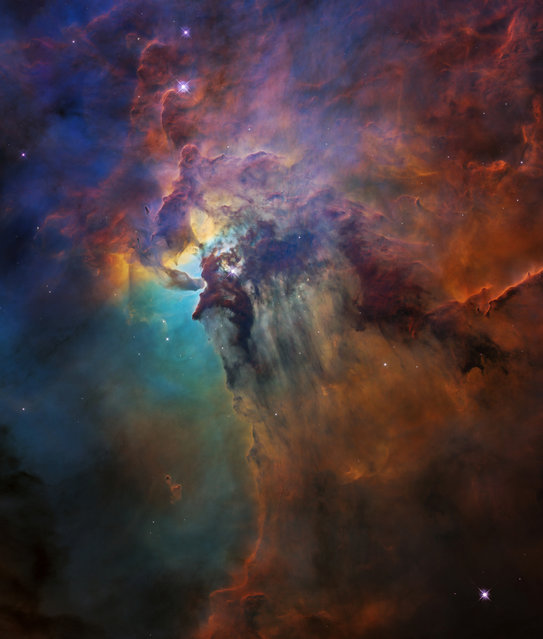
Ultraviolet radiation and stellar winds from a giant star called Herschel 36 push through dust in curtain-like sheets in the Lagoon Nebula stellar nursery, located 4,000 light years away, in this Hubble Space Telescope image obtained September 26, 2018. (Photo by NASA/ESA/STScI/Handout via Reuters)
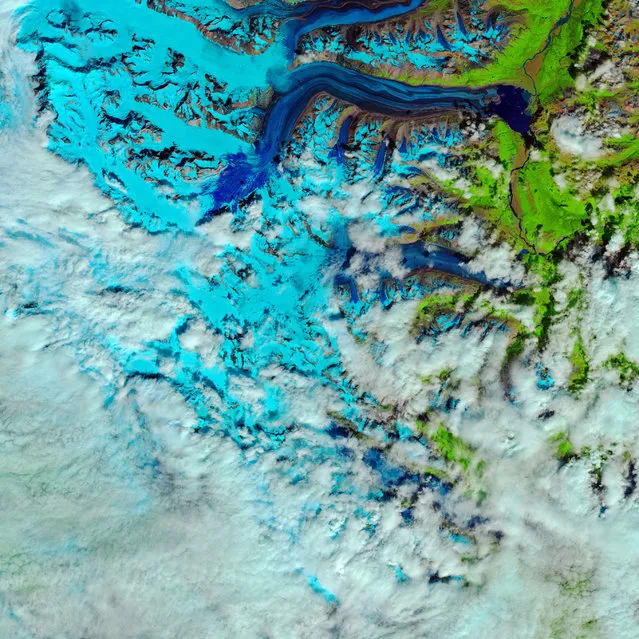
Snow from the previous winter melts into slush on Canada's Lowell Glacier, in this false-color satellite image showing frozen (light blue), meltwater (dark blue), rocks (brown) and vegetation (green) and the progression of rapid snow melt in the Kluane National Park in the Yukon Territory, Canada, July 26, 2018. (Photo by NASA/Joshua Stevens/USGS/European Space Agency/Kasha Patel/Handout via Reuters)
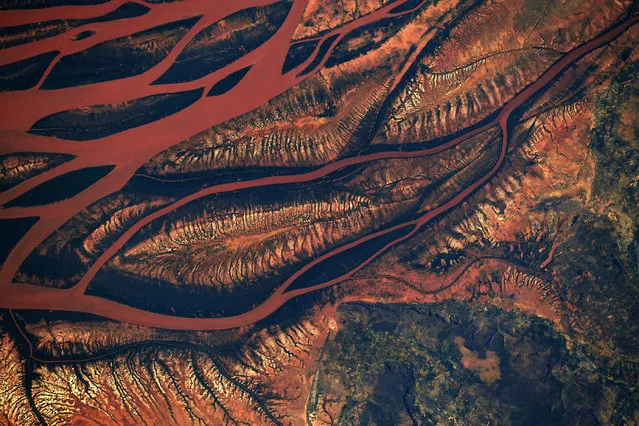
The Betsiboka Estuary in Madagascar, draining into the sea and showing changing landscapes due to decimation of rainforests and coastal mangroves, is seen from the International Space Station, July 11, 2018. (Photo by NASA/Ricky Arnold/Handout via Reuters)
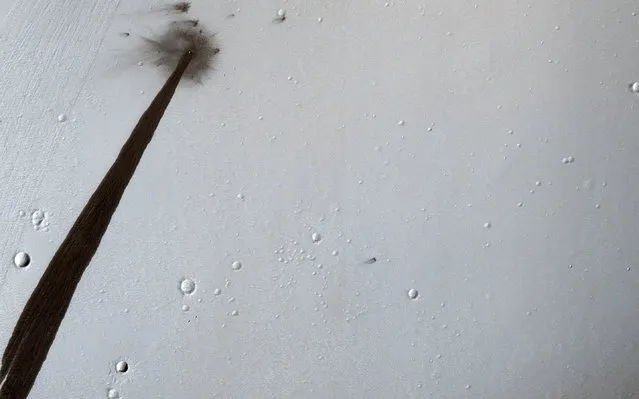
The dry and dusty surface of Mars is seen after a meteoroid hit and exploded, creating an impact crater 5 meters across and triggering a one-kilometer-long slope streak, or avalanche, in this image captured by NASA's Mars Reconnaissance Orbiter and obtained September 26, 2018. (Photo by NASA/JPL-Caltech/University of Arizona/Handout via Reuters)
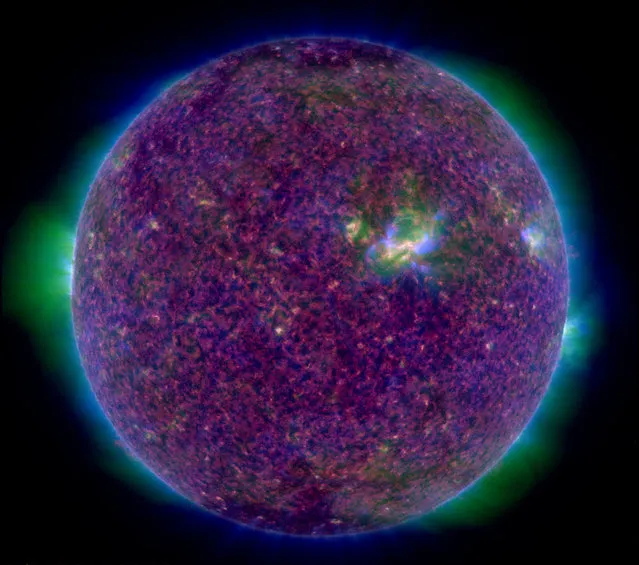
The sun is seen in this image taken by NASA's Solar Dynamics Observatory, which studies the Sun's magnetic field and atmosphere, May 15, 2018. (Photo by NASA/Solar Dynamics Observatory/Handout via Reuters)
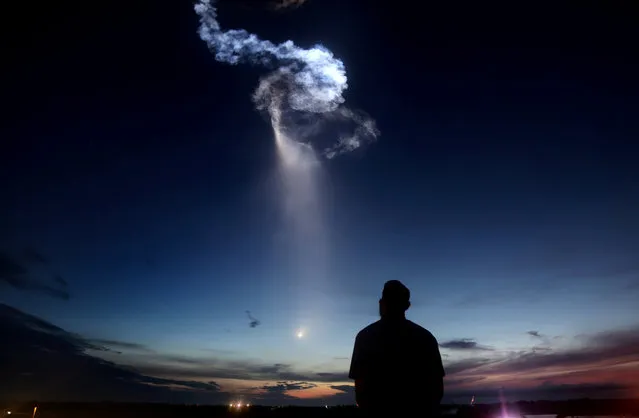
A SpaceX Falcon 9 rocket exits the atmosphere for a cargo resupply mission to the International Space Station, over Cape Canaveral, Florida, June 29, 2018, 2018. (Photo by Joey Roulette/Reuters)
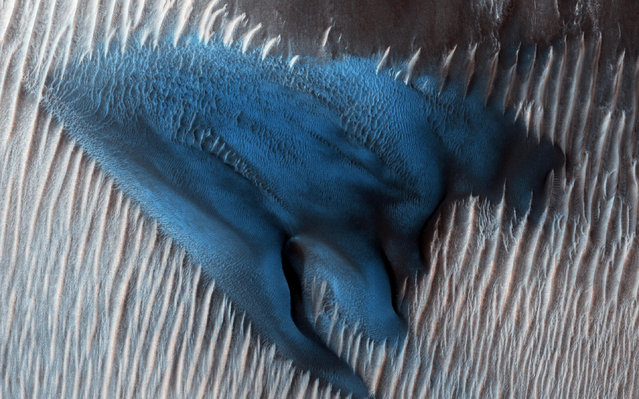
A field of barchan sand dunes appear turquoise blue on the surface of Mars in this enhanced image taken by the Mars Reconnaissance Orbiter, January 24, 2018. (Photo by NASA/JPL-Caltech/University of Arizona/Handout via Reuters)
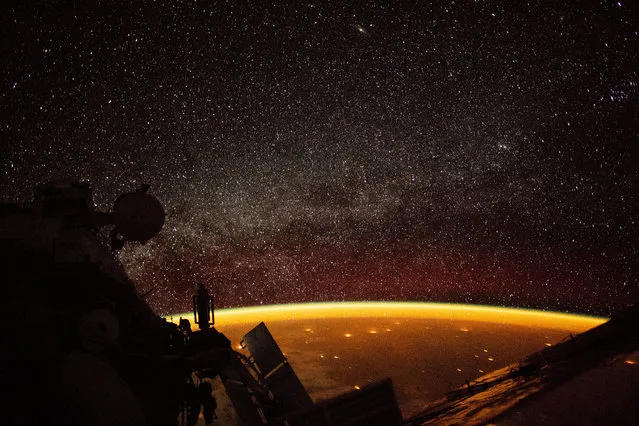
An orange hue envelops the Earth, known as “airglow”, a phenomenon that occurs when ultraviolet radiation hits molecules in the atmosphere and creates a band of light that reaches 50 to 400 miles high, in this image taken on board the International Space Station (ISS), October 7, 2018. (Photo by NASA/Handout via Reuters)
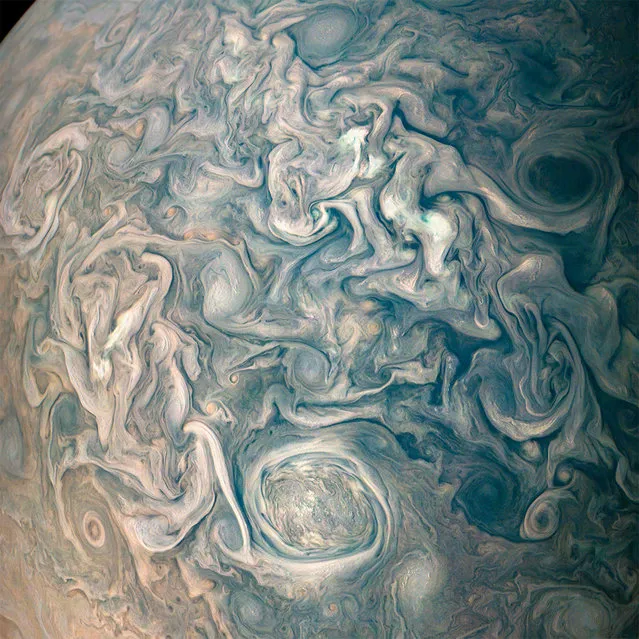
Swirling cloud belts and vortices are seen in Jupiter's northern hemisphere in this color-enhanced image taken by NASA's Juno spacecraft on a close flyby, May 23, 2018. (Photo by NASA/JPL-Caltech/SwRI/MSSS/Gerald Eichstadt/Sean Doran/Handout via Reuters)
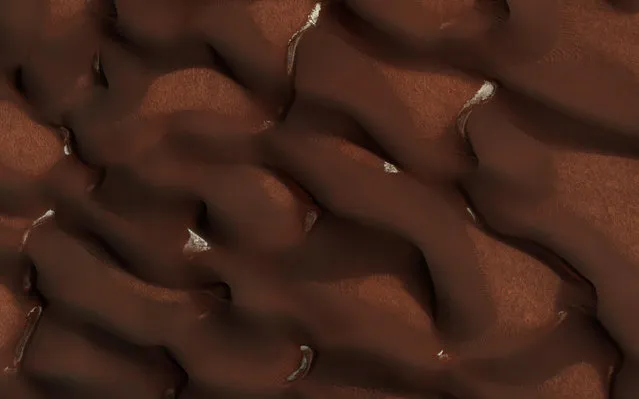
Dunes on Mars are almost free of their seasonal ice cover during early Martian summer, with pockets of ice still visible in areas protected by shade, as seen in this Mars Reconnaissance Orbiter image obtained September 26, 2018. (Photo by NASA/JPL-Caltech/University of Arizona/Handout via Reuters)
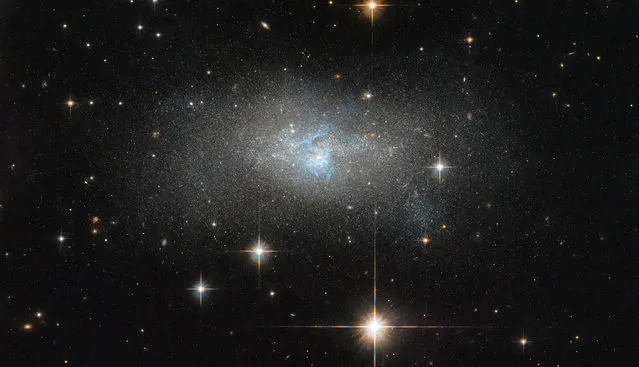
A Hubble Space Telescope image shows bright blue gas threading through the galaxy IC 4870, which shines because it emits radio wave and gamma-ray radiation, in this image obtained September 26, 2018. (Photo by NASA/ESA/Hubble Space Telescope/Handout via Reuters)
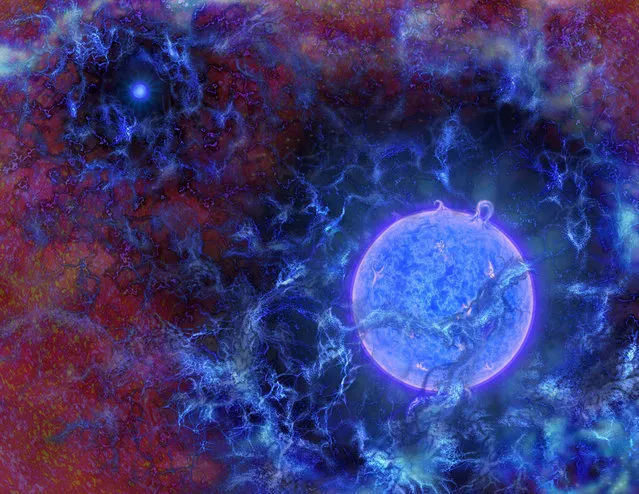
An artist's rendering of how the first stars in the universe may have looked, in this undated handout image obtained by Reuters February 27, 2018. (Photo by N.R. Fuller, National Science Foundation/Handout via Reuters)
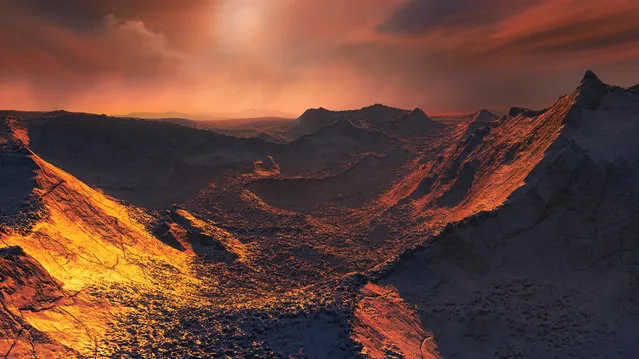
An artistic impression of a sunset from Barnard's star on a newly detected planet dubbed “Super Earth”, in this handout photo provided November 14, 2018. (Photo by European Southern Observatory/M. Kornmesser/Handout via Reuters)
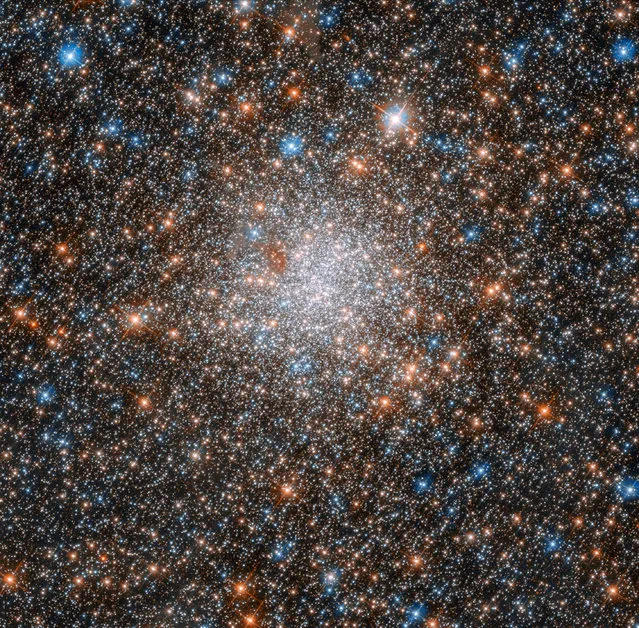
A globular cluster of stars known as NGC 1898 is seen in this image taken by the Hubble Space Telescope using the Advanced Camera for Surveys (ACS) to show near-infrared to ultraviolet wavelengths, and the Wide Field Camera 3 (WFC3) to show near-infrared to near-ultraviolet wavelengths, obtained November 16, 2018. (Photo by NASA/ESA/Hubble Space Telescope/Handout via Reuters)
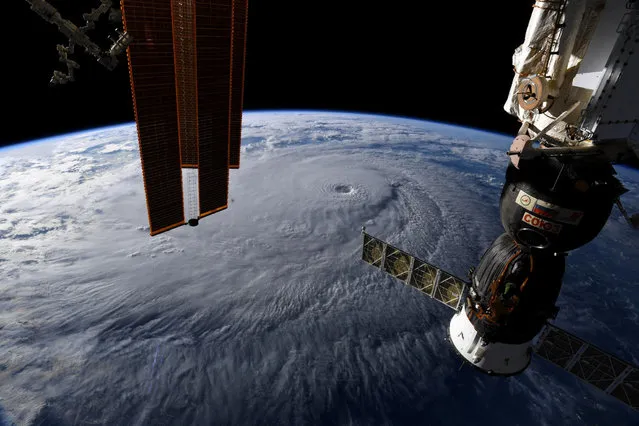
A photo taken from the International Space Station shows Hurricane Lane in the early morning hours near Hawaii, August 22, 2018. (Photo by Courtesy @astro_ricky/NASA/Handout via Reuters)

NASA's Juno spacecraft captures Jupiter's southern hemisphere, as the spacecraft performed its 13th close flyby of Jupiter on May 23, 2018. (Photo by NASA/JPL-Caltech/SwRI/MSSS/Kevin M. Gill/Handout via Reuters)

The west coast of southern Africa is seen from the International Space Station, September 29, 2018. (Photo by NASA/ESA/Alexander Gerst/Handout via Reuters)

The Cat's Paw Nebula, a star-forming region in the Milky Way galaxy so named because it resembles a feline footprint, is seen in this image compiled from data from the Infrared Array Camera (IRAC) and the Multiband Imaging Photometer (MIPS) aboard the infrared Spitzer Space Telescope, obtained November 16, 2018. (Photo by NASA/Spitzer Space Telescope/Handout via Reuters)
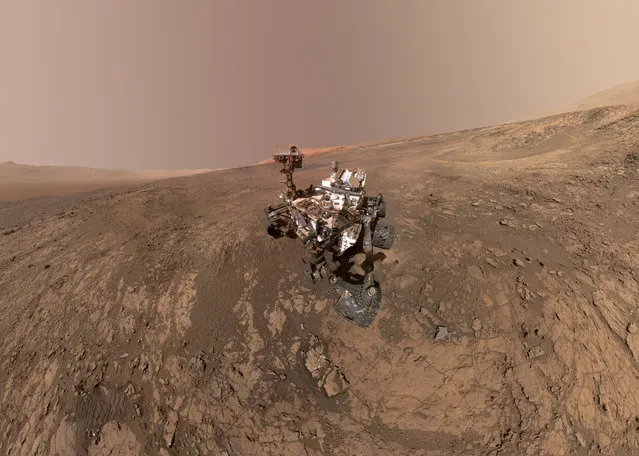
A “self-portrait” of NASA's Curiosity Mars rover shows the vehicle on Vera Rubin Ridge on the planet Mars, which the rover has been investigating for the past several months, according to NASA, in this handout photo mosaic assembled from dozens of images taken January 23, 2018. (Photo by NASA/Handout via Reuters)
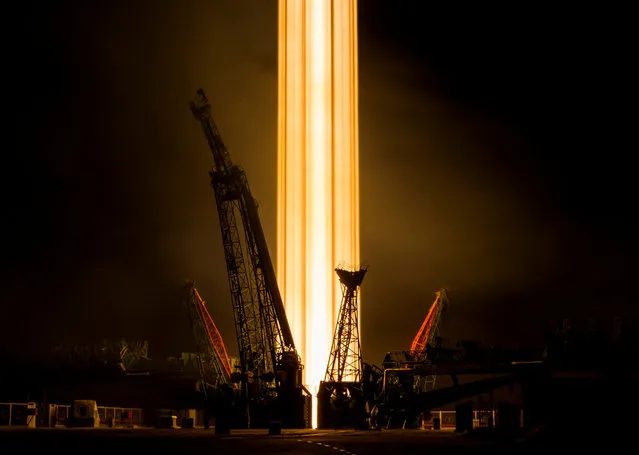
The Soyuz MS-08 spacecraft carrying the crew of astronauts Drew Feustel and Ricky Arnold of the U.S. and crewmate Oleg Artemyev of Russia blasts off to the International Space Station (ISS) from the launchpad at the Baikonur Cosmodrome, Kazakhstan, March 21, 2018, 2018. (Photo by Shamil Zhumatov/Reuters)

A cross-section of a thick sheet of underground ice is exposed at the steep slope that appears bright blue in this enhanced-color view of Mars from the High Resolution Imaging Science Experiment (HiRISE) camera on NASA's Mars Reconnaissance Orbiter in this image released on January 11, 2018. (Photo by NASA/JPL-Caltech/UA/USGS/Handout via Reuters)
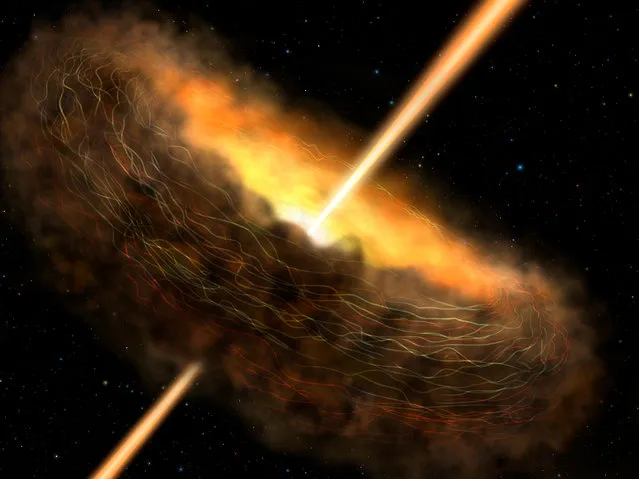
An artist's conception shows donut-shaped magnetic fields that trap dust and feed material into the supermassive black hole of the galaxy Cygnus A, with jets launching from its center, based on recent observations from the Stratospheric Observatory for Infrared Astronomy (SOFIA) in this image obtained November 16, 2018. (Photo by NASA/SOFIA/Lynette Cook/Handout via Reuters)
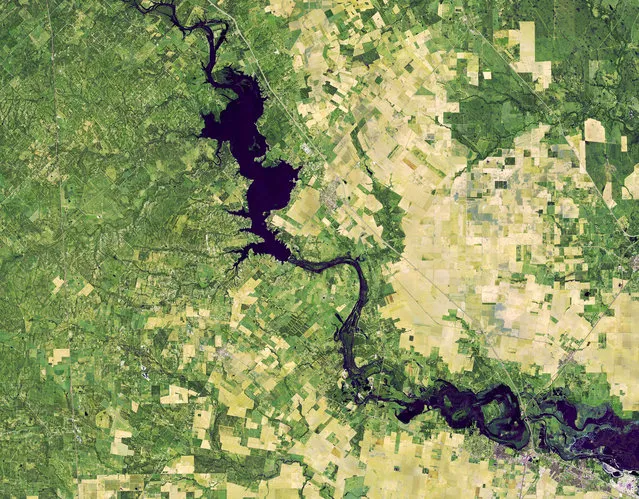
A false-color image from Operational Land Imager (OLI) on the Landsat 8 satellite shows flooding along the Nueces River after a historic amount of rain from the remnants of Hurricane Willa in central Texas, November 1, 2018. (Photo by NASA/GSFC/Joshua Stevens/Handout via Reuters)
01 Jan 2019 00:01:00,
post received
0 comments
